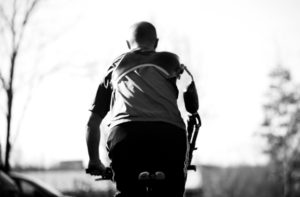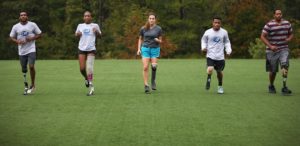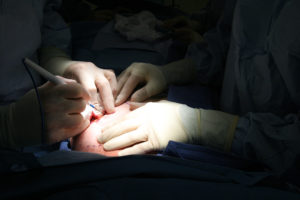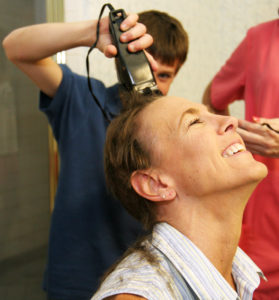Since I can remember, I’ve been granted the privilege of bearing witness to individuals regain mobility after suffering limb loss or gain mobility after being born with limb difference. I never had to be introduced to the concept of limb loss; I’ve never known a world without people living with limb difference. My Dad gifted me this perspective by taking me to work with him when I was a little girl. It seems like it was often. Occasionally, I’ll walk into an older building and the scent will remind me of that old Hanger clinic on Poole Rd.
The facility was in a poor part of town. Dad provided care to an underserved population in an underserved community. Most people living with limb loss are underserved, due to the condition of our healthcare system, but this was a particularly underserved area. I remember the layout of the building; canes sat in a round holder to the left and a walker to the right of the front door. I remember the reception counter spanned three-quarters the front of the waiting room; my Dad’s office was on the right. A long hallway down the left side of the building opened up into a big (I was quite small) lab in the back, with sand boxes and machines and my friends, Mike and Tony.
The gait room was my playground, and Dad’s patients, my playmates. I am aware that it could be viewed as insensitive to have a small able-bodied child running around a prosthetist’s office, swinging on the parallel bars while someone tried to walk in them for the first time after an amputation, but the way Dad tells the stories, no one was offended. In fact, my Dad took care of many of those patients through the end of their lives, and still provides prosthetic care to a few of them today.
I was obviously too young to appreciate the role those experiences would play later in my life. My memories of time and space are likely skewed, as is the case with all recreations of the mind, but my sense of it all hasn’t changed a bit.
I’ve been in countless O&P facilities since my youth. I’ve done a little bit of everything I could do in O&P without credentials, from transcribing notes and helping in the lab in my teens, to opening new facilities and helping grow our company in my twenties, and ultimately running and helping sell our family-owned business in my thirties. There are several generations of people with similar stories to tell.
My Dad has been a prosthetist all my life, my mother a nurse. They were volunteer rescue workers in the small town where I grew up and took me on a “call or two” when the pagers went off in the middle of the night. Their dedication to their careers, to taking care of their patients, undoubtedly influenced and shaped my own identity. And though I do not work directly in healthcare, it is central to my personal/professional motivation and mission.
Even during my short photojournalism career, one of the most meaningful stories I ever covered was a year-long piece about a courageous survivor of breast cancer. I met her and her family the day she was diagnosed. Soon after, I scrubbed into her double mastectomy surgery. I documented the toughest moments of her experience, but also the hope. I spent countless hours in her home and with her family. I sat beside her during treatments, and I rushed to be there when she decided to shave her head because she was tired of losing her hair.
In some ways, that experience would prepare me for David. Though, nothing can really prepare us for those magical people that come along and change our lives. And in referencing my hero, I bring this rambling full circle. David is probably the reason I made my employment more permanent at Beacon after I moved back to North Carolina. Even after he was gone, after I finished graduate school, I couldn’t convince myself that there would ever be anything more rewarding than a career in O&P.
Carolina. Even after he was gone, after I finished graduate school, I couldn’t convince myself that there would ever be anything more rewarding than a career in O&P.
I believe it, still.
We’ve made encouraging advancements in this profession, but we can do more, we can be better. We have to push the boundaries to better serve those who rely on our services to maintain mobile, functional lives.
This is my starting point, every day. I ask myself, what can we do today to make things better for people living with limb loss and mobility challenges and the clinicians providing their care. From there, it is easy for me to work tirelessly on projects and initiatives that will improve the O&P profession.
I feel so fortunate to work for AOPA, an organization that literally includes my professional goals and ambitions in its mission statement.


